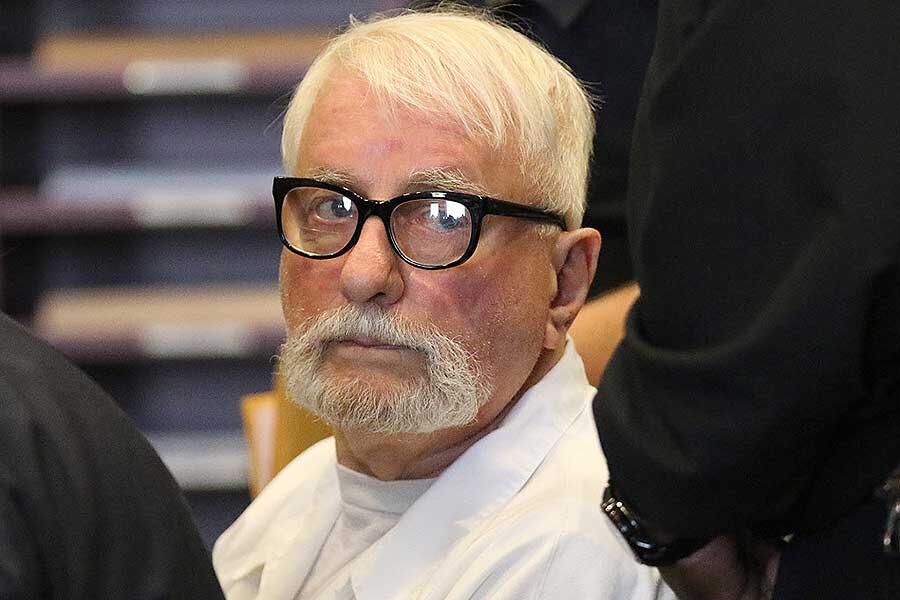76-year-old man freed in 1957 killing as exonerations rise
Loading...
On Friday, an Illinois judge upended one of the oldest cold cases ever to go trial, vacating the 2012 murder conviction of a 76-year-old man found guilty of murdering a 7-year old girl in 1957.
Judge William Brady ordered a new trial for Jack McCullough, who had protested his innocence in the long-unsolved murder of Maria Ridulph. Maria is believed to have been abducted as she played in the snow in Sycamore, Illinois.
Judge Brady ordered Mr. McCullough, a former security guard who had been sentenced to life in prison, released from custody on Friday pending the new trial.
Maria's remains were later found by people hiking in the forest in Sycamore, about 70 miles west of Chicago, five months after her disappearance almost six decades ago.
The case began to unravel last month after DeKalb County State's Attorney Richard Schmack conducted a review of the case after McCullough's conviction and concluded that the evidence appeared to support McCullough's claim that he was forty miles away when the abduction happened.
In the 1950s, Maria's disappearance quickly led to national headlines, coming at a time when reports of child abductions were relatively unusual. But the doubts around McCullough's conviction — which are not shared by the 7-year-old's surviving relatives — follow a current trend.
There were a record 149 exonerations last year, according to a February report by the National Registry of Exonerations based at the University Michigan's law school, which noted that, despite progress, it is still "a drop in the bucket" of wrongful convictions. Since 2011, the annual number of exonerations has more than doubled, now reaching nearly three exonerations a week, the Christian Science Monitor's Henry Gass reported.
In large part, the trend is driven by prosecutors' increasing attention to potentially wrongful convictions, including the rise of dedicated Conviction Integrity Units within district attorneys' offices.
"Most prosecutors want to do the right thing… It's not in the interest of prosecutors and society to have an innocent person in prison, because it also means a guilty person is free," Daniel Medwed, a professor at Northeastern University School of Law, told the Monitor in February.
On Dec. 3, 1957, Maria had been playing outside in the snow with a friend when a young man calling himself "Johnny" offered them piggyback rides. Maria's friend left to find mittens, but Maria and "Johnny" were gone when she returned.
During McCullough's trial, prosecutors pointing out that he went by "John Tessier" as a young man argued that the 18-year-old had choked and stabbed Maria.
But Mr. Schmack — who wasn't involved with the 2012 conviction, having been elected just as the trial ended — conducted a six-month review of evidence that appeared to support McCullough's innocence.
He had long claimed that he was in Rockford, some forty miles away, attempting to enlist in the U.S. Air Force at a military recruiting station on the night Maria disappeared, the Associated Press reports.
In a highly-critical report filed last month with the court, the prosecutor said that newly uncovered phone records showed McCullough had made a collect call to his parents from a phone booth in downtown Rockford at 6:57 p.m., while Maria had been abducted some time between 6:45 and 6:55 p.m.
The new documents revealed "a wealth of information pointing to McCullough's innocence, and absolutely nothing showing guilt," Schmack wrote. He also reviewed police reports and other documents, including from the Air Force recruiting office, which he said had been improperly barred during McCullough's trial.
But surviving relatives — including Maria's brother, 70-year-old Charles Ridulph, and Jack McCullough's half-sister, Mary Hunt – say they remain unconvinced.
Mr. Ridulph, who still lives in Sycamore, filed a motion last month asking the judge to appoint a special prosecutor in an attempt to keep McCullough in jail.
This report includes from the Associated Press.







